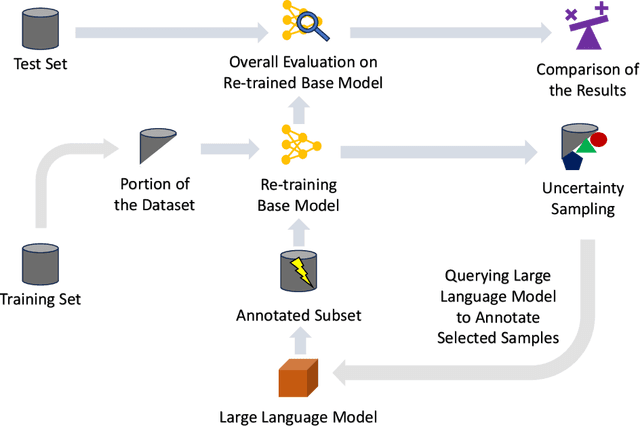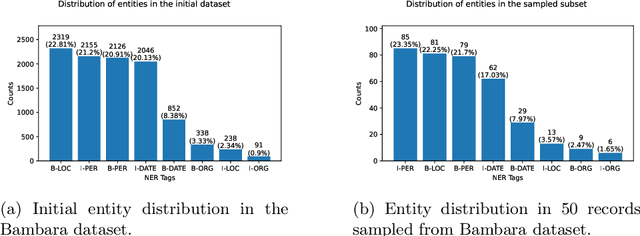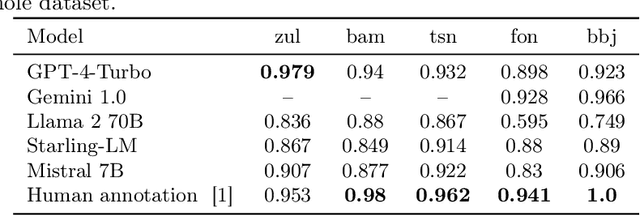Mohammad Khodadadi
Department of IT & Computer Engineering, Urmia University of Technology, Orūmīyeh, Iran
LLMs in the Loop: Leveraging Large Language Model Annotations for Active Learning in Low-Resource Languages
Apr 02, 2024



Abstract:Low-resource languages face significant barriers in AI development due to limited linguistic resources and expertise for data labeling, rendering them rare and costly. The scarcity of data and the absence of preexisting tools exacerbate these challenges, especially since these languages may not be adequately represented in various NLP datasets. To address this gap, we propose leveraging the potential of LLMs in the active learning loop for data annotation. Initially, we conduct evaluations to assess inter-annotator agreement and consistency, facilitating the selection of a suitable LLM annotator. The chosen annotator is then integrated into a training loop for a classifier using an active learning paradigm, minimizing the amount of queried data required. Empirical evaluations, notably employing GPT-4-Turbo, demonstrate near-state-of-the-art performance with significantly reduced data requirements, as indicated by estimated potential cost savings of at least 42.45 times compared to human annotation. Our proposed solution shows promising potential to substantially reduce both the monetary and computational costs associated with automation in low-resource settings. By bridging the gap between low-resource languages and AI, this approach fosters broader inclusion and shows the potential to enable automation across diverse linguistic landscapes.
HyMo: Vulnerability Detection in Smart Contracts using a Novel Multi-Modal Hybrid Model
Apr 25, 2023Abstract:With blockchain technology rapidly progress, the smart contracts have become a common tool in a number of industries including finance, healthcare, insurance and gaming. The number of smart contracts has multiplied, and at the same time, the security of smart contracts has drawn considerable attention due to the monetary losses brought on by smart contract vulnerabilities. Existing analysis techniques are capable of identifying a large number of smart contract security flaws, but they rely too much on rigid criteria established by specialists, where the detection process takes much longer as the complexity of the smart contract rises. In this paper, we propose HyMo as a multi-modal hybrid deep learning model, which intelligently considers various input representations to consider multimodality and FastText word embedding technique, which represents each word as an n-gram of characters with BiGRU deep learning technique, as a sequence processing model that consists of two GRUs to achieve higher accuracy in smart contract vulnerability detection. The model gathers features using various deep learning models to identify the smart contract vulnerabilities. Through a series of studies on the currently publicly accessible dataset such as ScrawlD, we show that our hybrid HyMo model has excellent smart contract vulnerability detection performance. Therefore, HyMo performs better detection of smart contract vulnerabilities against other approaches.
 Add to Chrome
Add to Chrome Add to Firefox
Add to Firefox Add to Edge
Add to Edge